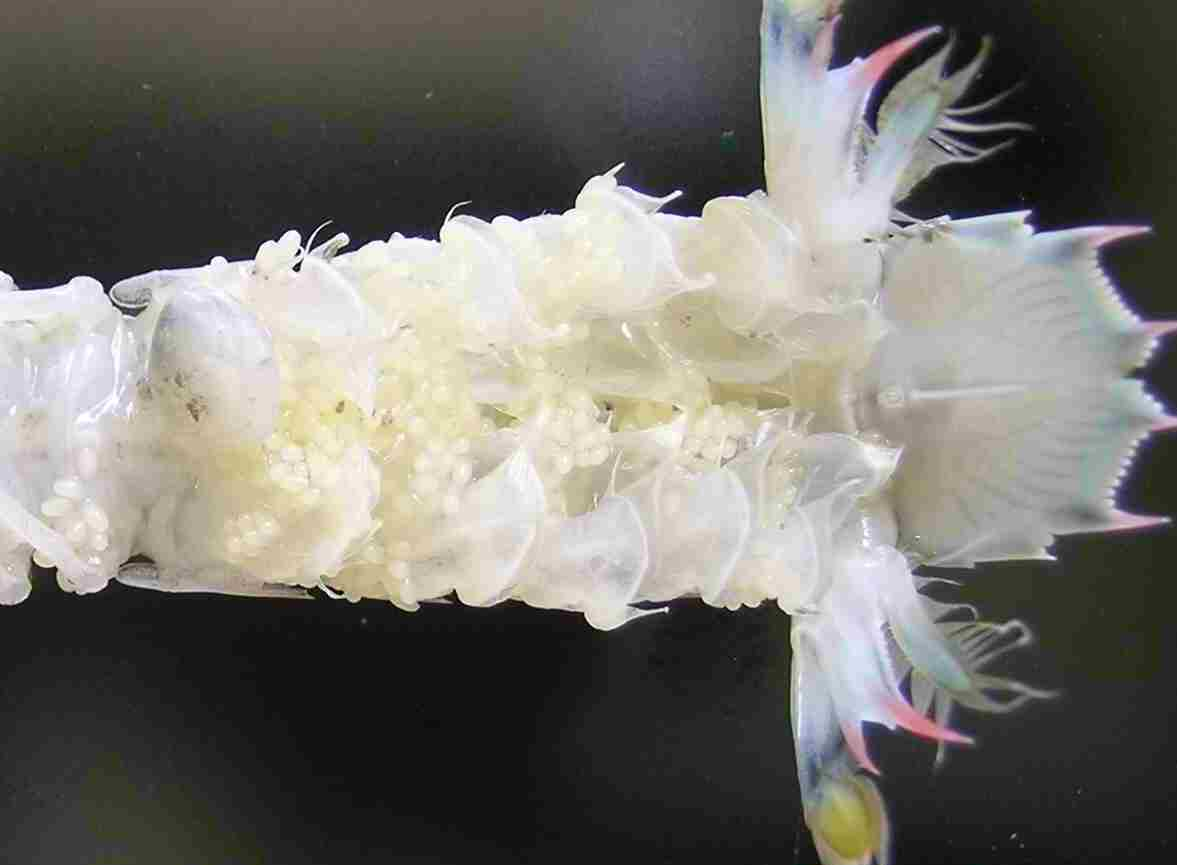
| Parasite | Thylacoplethus squillae |
|---|---|
| Taxonomy | Arthropoda, Crustacea, Rhizocephala |
| Host | Japanese mantis shrimp (Oratosquilla oratoria) |
| Infection site | Ventral surface, appendages (mainly pleopods). |
| Clinical sign | A number of white ellipsoidal bodies (average 0.8×1.2 mm), which looks like eggs, is observed on the pleopods of the host (Fig. 1). |
| Parasitology | The ellipsoidal body is an external body (externa) of Thylacoplethus squillae. An externa enveloped by a thick transparent cuticle, attaches to the host by a stalk located at one end (Fig. 2) and is filled with numerous embryos (about 92×117 mm) composed of 1-4 cells (Momoyama and Tensha, 2006). |
| Pathology | No report |
| Health hazard | Since this parasite is not infectious to human, it is harmless in food hygiene. |
| Diagnosis | The parasites can be visually observed. |
| Other information | This parasite was originally described as Thompsonia japonica, however, Hoeg and Lutzen (1993) reassigned it to Thylacoplethus squillae. |
| References | Hoeg, J. T. and J.
Lutzen (1993): Comparative morphology and phylogeny of the family Thompsoniidae
(Cirripedia, Rhizocephala, Akentrogonida), with descriptions of three new
genera and seven new species. Zool. Scri.,
22, 363-386. Momoyama, K. and K. Tensha (2006): Ugly-looking parasitic infections and other abnormalities of wild fish and shellfish caught in the coastal or inland waters around or in Yamaguchi Prefecture. Bull. Yamaguchi Pref. Fish. Res. Ctr., 4, 143-161. (In Japanese) |


Fig. 1. A ventral side of Japanese mantis shrimp parasitized by
T. squillae.
(Photos by K. Momoyama and K. Tensha)
Fig. 2. An externa of T. squillae.